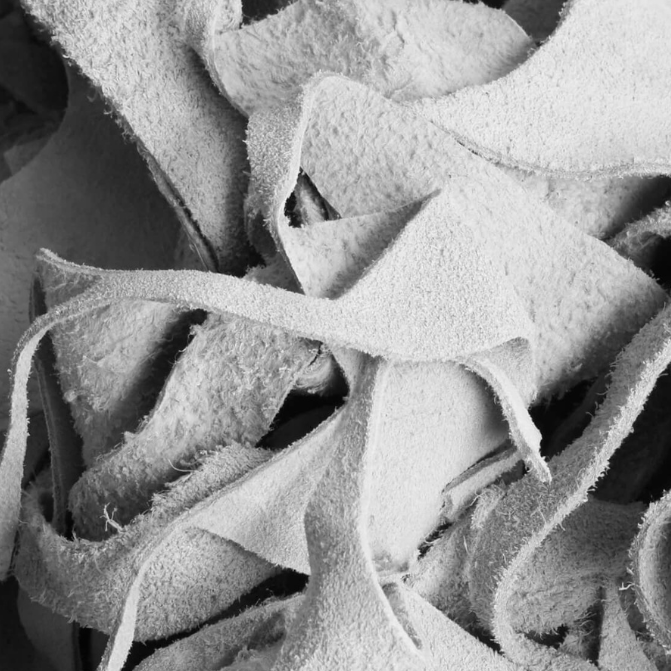Life Cycle Assessment Verification Report (LCA)
In June 2023, we contacted TÜV Süd, a global leader in technical testing and certification, to conduct a detailed report on our production process.
This decision supports our commitment to sustainability and circularity, providing third-party verification of our environmental impact.
At Recyc Leather, transparency is essential, so our mission isn’t just to claim a more responsible production, but to earn it with the hard facts. We believe in using real data to move forward and welcoming people to see our process firsthand.
International buyers and brands have visited our facilities, and we will continue sharing insights on how we work.

The LCA was a critical but essential step in understanding our true environmental footprint— showing us exactly where we stand and what we can improve.
Besides our current achievements, the certification works as a tool for smarter decision-making and defining goals in the upcoming future.
Sustainability in action: turning leather waste into circular solutions
Our recycled leather fibers material represents the next generation of leather. The LCA allows us to compare our material to genuine leather, proving our progress in sustainability and innovation.

Leather has been used for thousands of years and is known for its durability and strength. While we acknowledge the challenges in the industry, we don't aim to replace it completely, but instead focus on moving forward with a closed-loop approach.
The inspection of our facilities in southern China was comprehensive. TÜV Süd analysed our scraps collection methods, material sourcing, energy consumption, water usage, and transportation impacts. They reviewed every step of the production process to ensure accuracy. The process of recycling leather waste will be a subject we explore in detail later on.

Impact Category: Key Numbers
One square meter of recycled leather (1.5mm thick) was used as the unit of comparison.
• kg represents the total amount in terms of environmental impact.
• 1,4-DCB (1,4-dichlorobenzene equivalents) is a unit used to measure the ecotoxicity or toxicity impacts of pollutants on ecosystems
|
Impact Category |
Recyc Leather |
Primary Leather |
|
Human Toxicity |
2,52 kg/ 1,4 - DCB |
140, 34 kg/ 1,4- DCB |
|
Terrestrial ecotoxicity |
11,48 kg/ 1,4 - DCB |
69,68 kg/ 1,4- DCB |
|
Water Consumption |
0.10 m³ |
0.72 m³ |
Terrestrial Ecotoxicity: It measures how harmful a substance can be to soils and terrestrial ecosystems. Primary leather generates about 6 times more toxic effects.
Human (Non-Carcinogenic)Toxicity: It refers to the potential health risks (other than cancer), such as breathing issues or skin irritation, from exposure to harmful substances. In this area, primary leather has a significantly higher impact, producing over 55 times more than Recyc Leather.
Furthermore, Recyc Leather consumes 70% less water and produces 12 times fewer CO₂ emissions than genuine leather, generating only 5.28 kg of CO₂ compared to 62.50 kg.
In conclusion, the verification confirms that our operations have a reduced environmental impact compared to primary leather. However, we acknowledge there is still room for improvement, as our mission isn’t about achieving perfection but about constantly evolving.
Moving Forward
We are currently focused on improving our coating process, which remains the area with the biggest impact. Although our existing water-based PU coating represents progress, we are actively working on a biobased alternative to further reduce our emissions.
As we continue to innovate and improve, we invite you to review the facts and difference for yourself, and join us as we continue our responsibility for a changing future.








